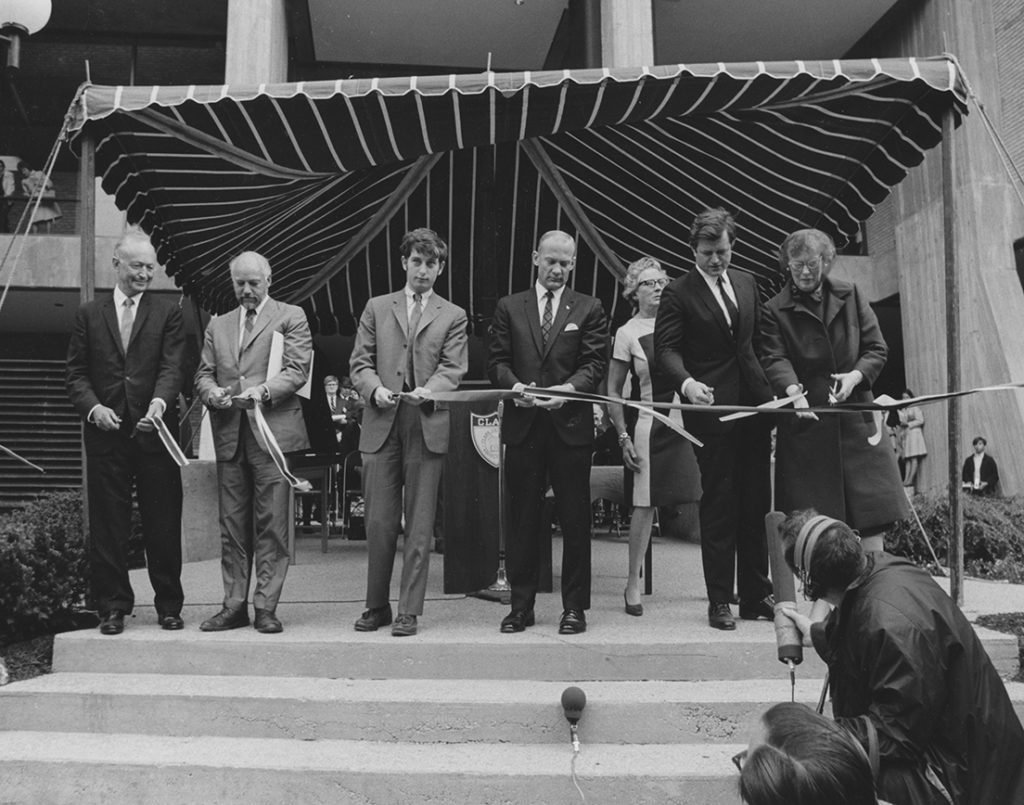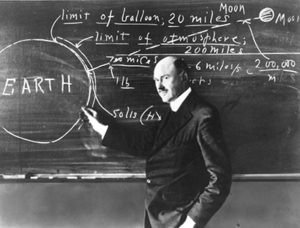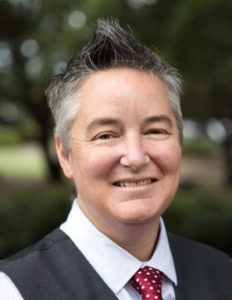Clark community to celebrate 50 years of Goddard Library

This year, people around the world are celebrating the 50th anniversary of that day in July 1969 when astronauts Neil Armstrong and Edwin “Buzz” Aldrin Jr. became the first two men to set foot on the moon.

On Wednesday, March 13, Clark University will commemorate not only the moonwalk, but also the 50th anniversary of the building named for the Clark physicist and professor whose research made that moonwalk possible: Robert Hutchings Goddard, A.M. 1910, Ph.D. 1911, also known as the “Father of Modern Rocketry.”
The celebration will begin at 7 p.m. in Clark’s Tilton Hall on the second floor of the Higgins University Center. University librarian Gwen Arthur and Jim Dempsey, Worcester journalist and current president of The Friends of Robert Hutchings Goddard Library, will welcome the crowd. Laurie Leshin, former NASA scientist and president of Worcester Polytechnic Institute (WPI), will discuss space exploration, and Chris Bourg, director of libraries for the Massachusetts Institute of Technology, will speak about the future of academic libraries.

Before joining WPI, Leshin served as dean of the School of Science at Rensselaer Polytechnic Institute, working as a scientist for the Mars Curiosity Rover mission and as an advisory board member for the Smithsonian National Air and Space Museum. Before joining Rensselaer, she was deputy director of NASA’s Exploration Systems Mission Directorate, where she oversaw NASA’s future human spaceflight programs and activities. In 2004, Leshin received the NASA Distinguished Public Service Medal, and in 2011, NASA’s Outstanding Leadership Medal.

Bourg earned a doctorate in sociology from Stanford University. She is responsible for all libraries and library services at MIT, including the Institute Archives and Special Collections, and also oversees the MIT Press. Bourg is “an important figure on the library scene” and “an advocate for open access, diversity and inclusion, and social justice,” Arthur says.
The Robert H. Goddard Library was designed by architect John M. Johansen, who worked in close collaboration with then-Clark librarian Tilton M. Barron and the Clark Library Planning Subcommittee. Built in the Brutalist style, the brick and concrete building was, according to the dedication ceremony program, intended to “invoke a feeling of intellectual strength and a firm sense of mission, perhaps Dr. Goddard’s most outstanding personal characteristics.”

When the building was dedicated on May 19, 1969, Goddard’s widow, Esther, cut the ribbon. Also attending was Buzz Aldrin — whose father, a Clark alumnus (class of 1915), had studied with Goddard and was instrumental in helping Goddard secure research funding from the Guggenheim family. Aldrin, who received an honorary degree at the library dedication, would be standing on the moon just two months later.
Among its many features, the Goddard Library houses The Goddard Exhibition, which comprises Goddard’s diaries and journals, patent applications and awards, correspondence and photographs, and a scale model of Goddard’s first launch frame. An autographed copy of his miniature autobiography, which Buzz Aldrin carried with him on that historic voyage to the moon, is also in the library’s archives, along with many other historic treasures.
The event, which is sponsored by the Goddard Library and The Friends of the Robert H. Goddard Library, is free and open to the public.


